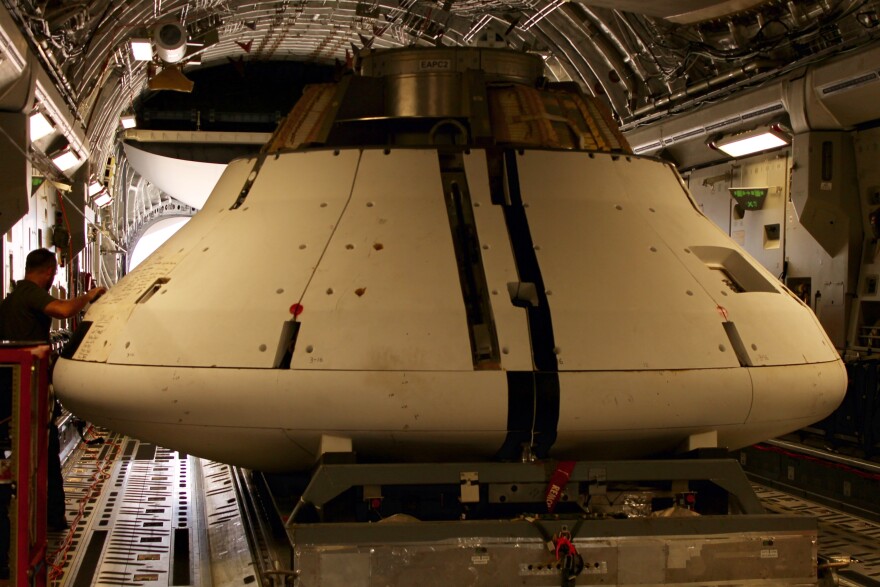Before mankind takes that giant leap to Mars, there are a lot of smaller steps men and women are taking here on Earth to prepare for the mission.
To test the Orion spacecraft's landing parachutes, the crew dropped a model of the capsule from 35,000 feet above the Army’s Yuma Proving Ground on August 26.
This remote part of the Sonoran Desert is a perfect place for a spacecraft test. You can usually count on a few things like no rain, few clouds and an isolated place to land.
NASA engineer Michele Parker said the location and good weather allow the scientists to take reliable measurements of the angle and speed when the mock Orion capsule lands.
And if anything goes wrong, it’s easy to spot.
“You’ll see it coming down really fast," Parker said.
NASA hopes the Orion Mission will fly to an asteroid and then to Mars by the mid-2030s.
When Orion and crew return to Earth, 11 large parachutes will slow the capsule – from 20,000 miles per hour down to 20 miles per hour – as it re-enters the atmosphere and lands in the ocean.
Of the 11 parachutes, three are considered the main parachutes that slow the spacecraft. There are others to pull out the main chutes, stabilize the capsule, and pull off a protective cover. The parachutes are made of Kevlar – a material also used in bullet-proof vests – and nylon.
Previous tests at looked one parachute failure. For this test, by design, two of these parachutes will fail – a main parachute and a stabilizing one called a drogue.
The team wants to see if what the landing they predicted through modeling and wind tunnel tests will actually happen in an environment more close to actual flight conditions.
“The system is designed to land beautifully like that, on just one drogue and two main,” Parker said.
For the next few months, Parker’s team will look at the test results to see how the system handled the stress of the landing. They will also check the parachutes for even the smallest rip or tear.
There will be one more unmanned Orion parachute test before NASA can begin test runs with crew members inside the capsule.
View a slideshow of more photos from the test here: http://kawc.org/post/slideshow-nasa-orion-parachute-test-yuma-proving-ground



